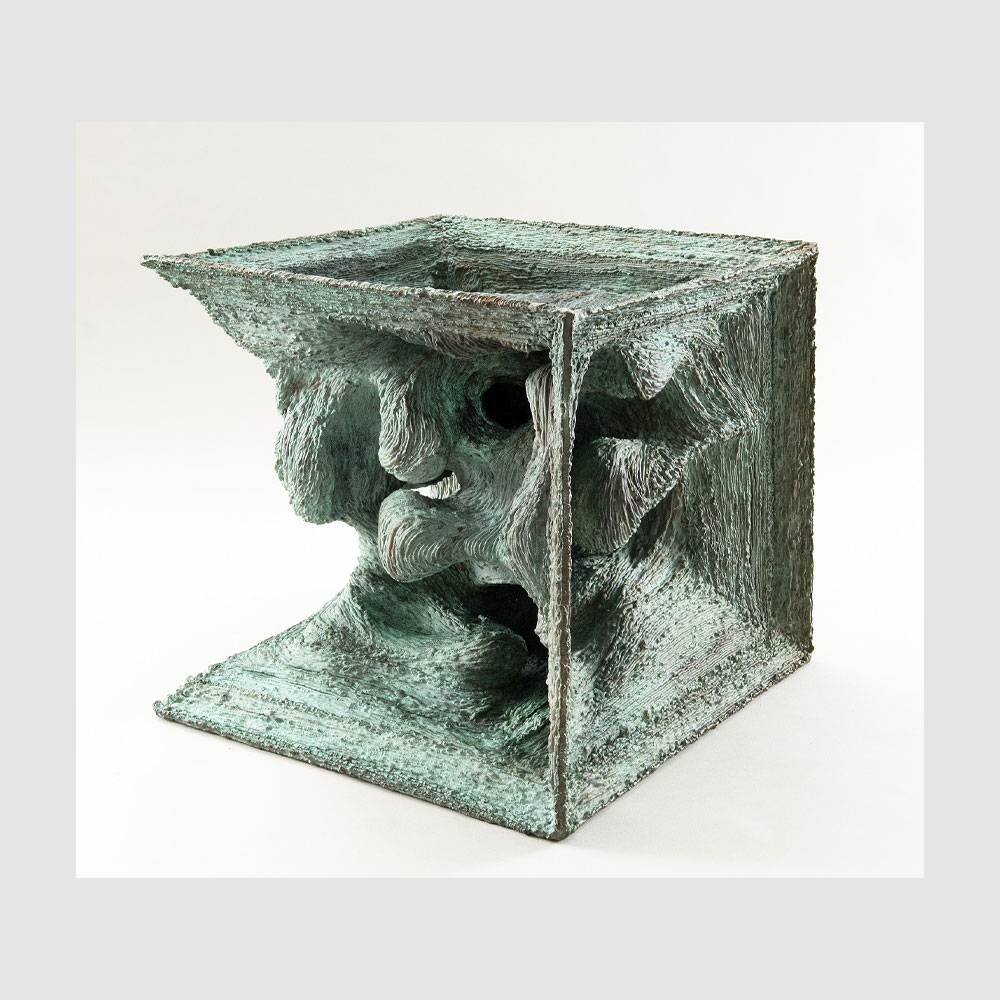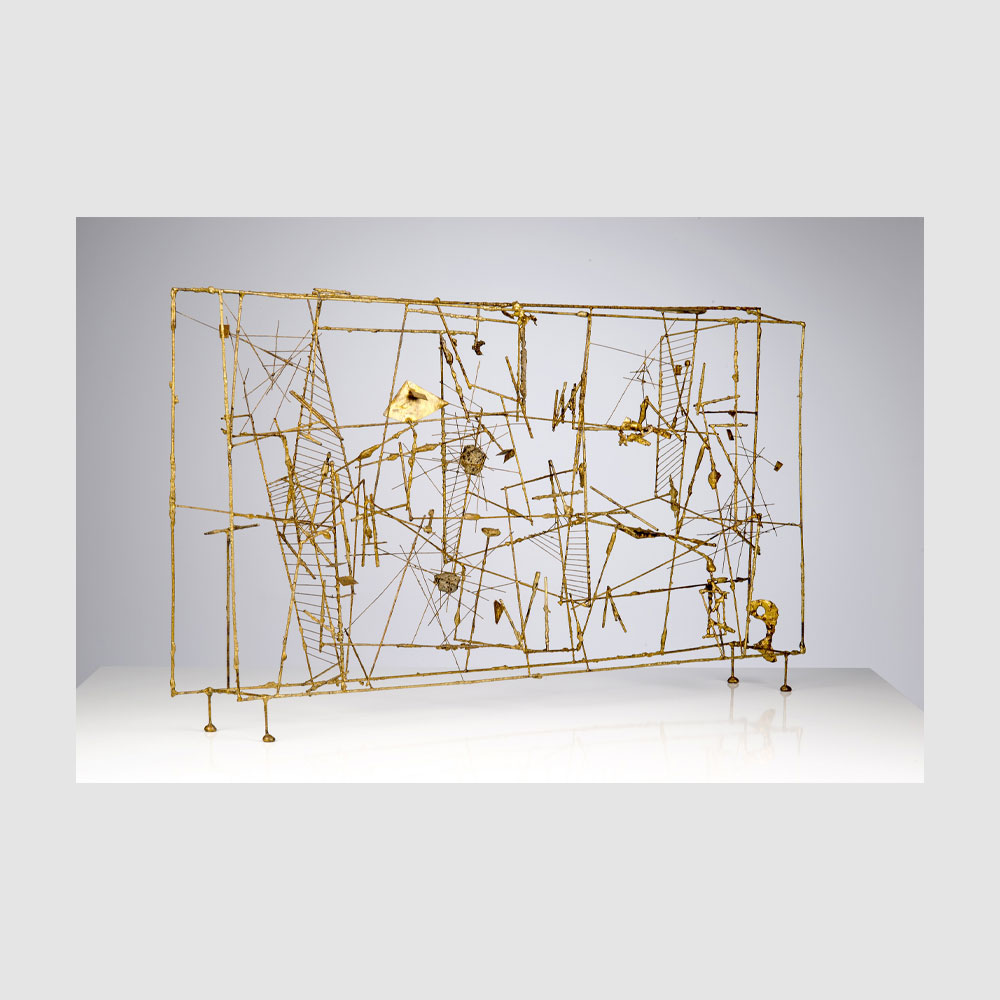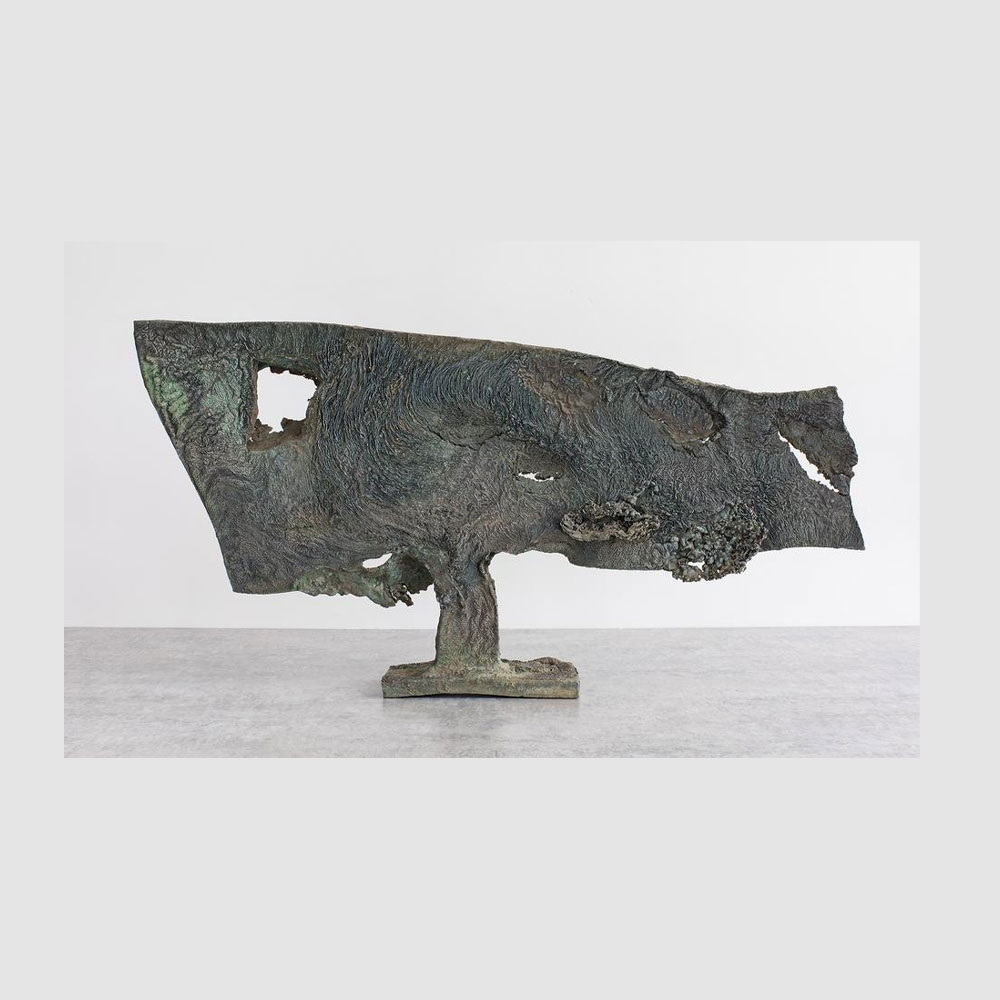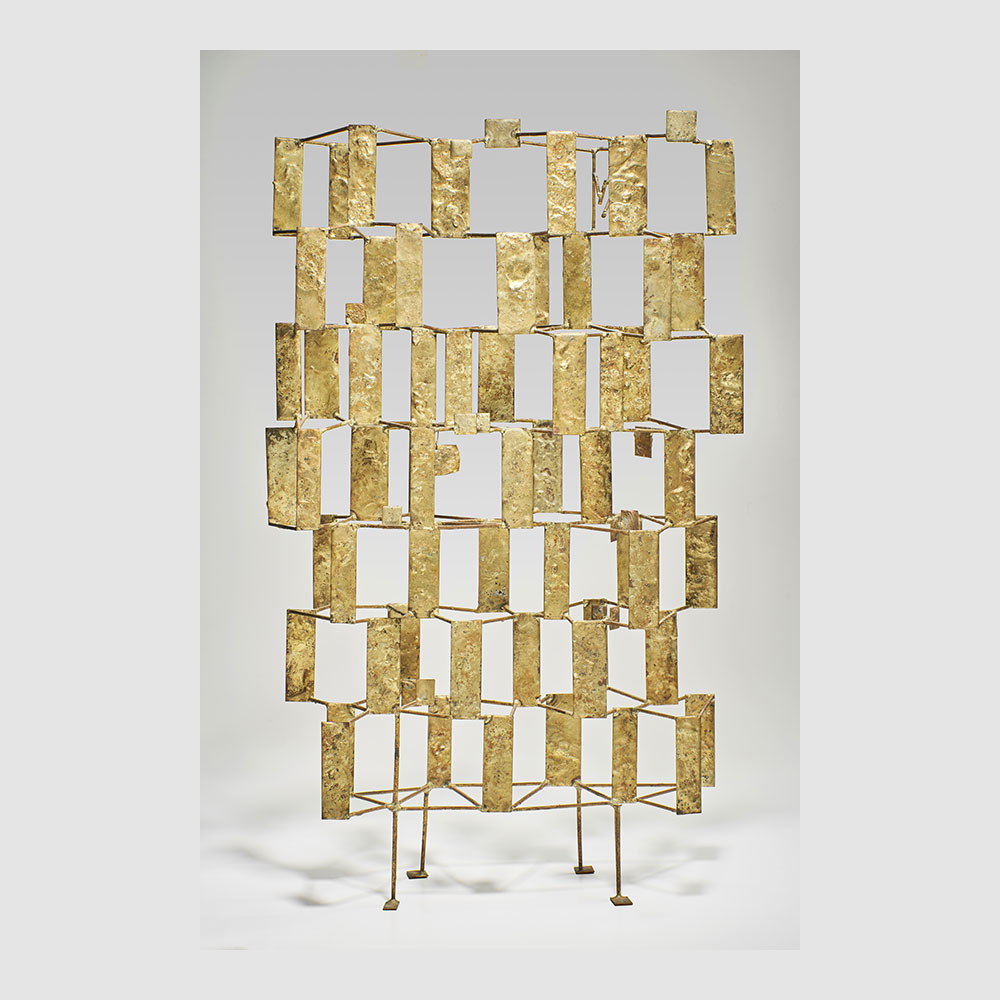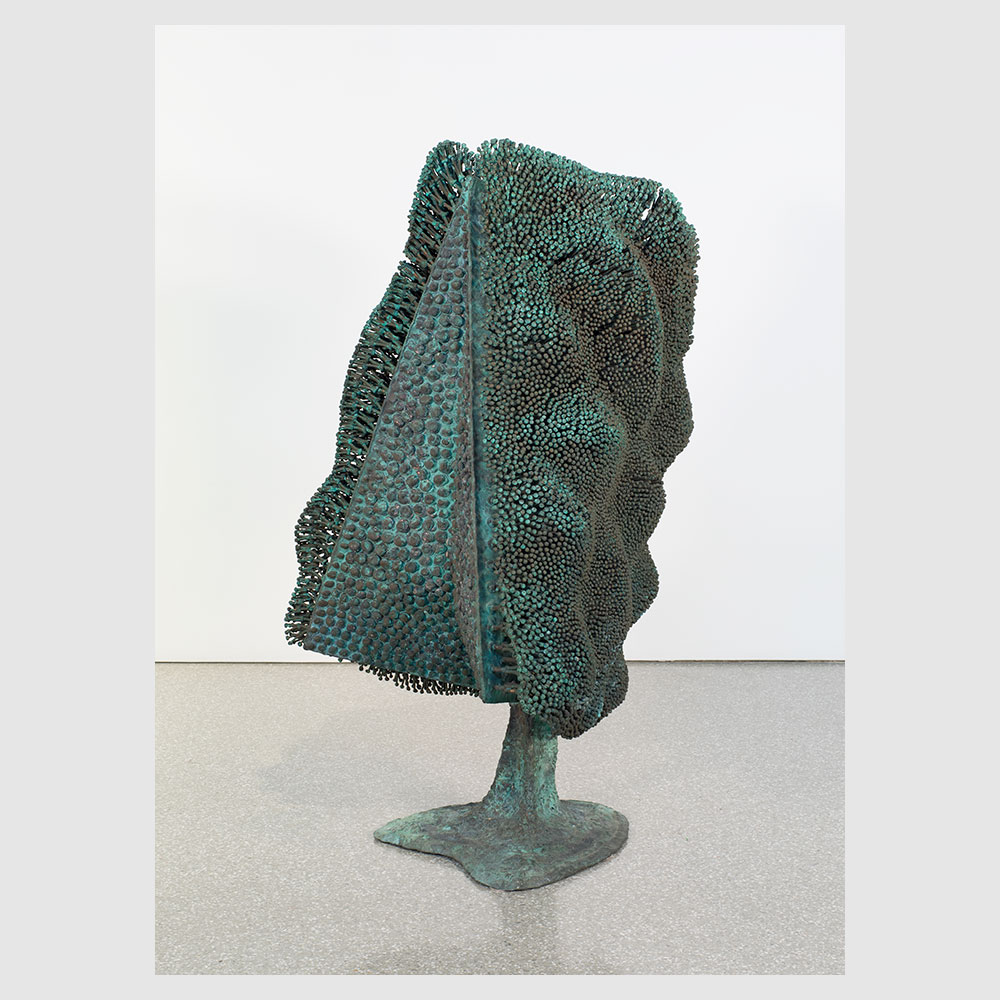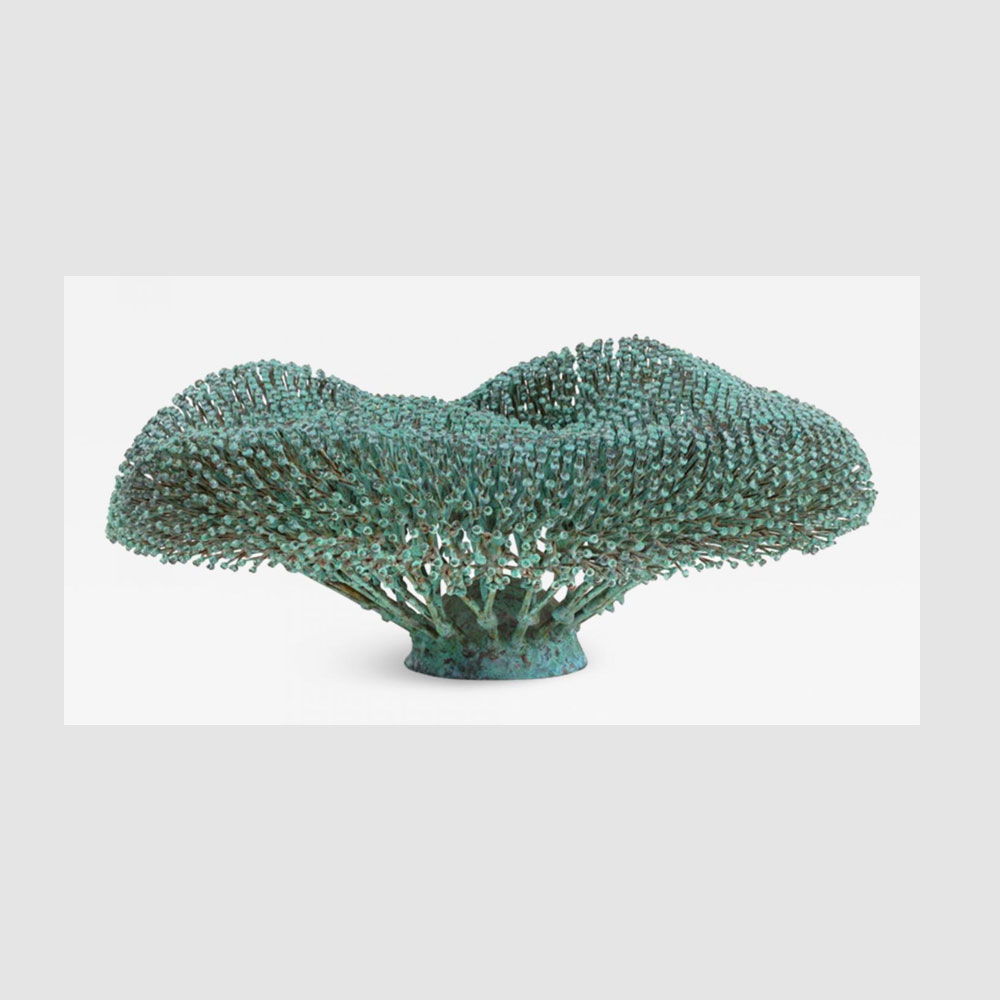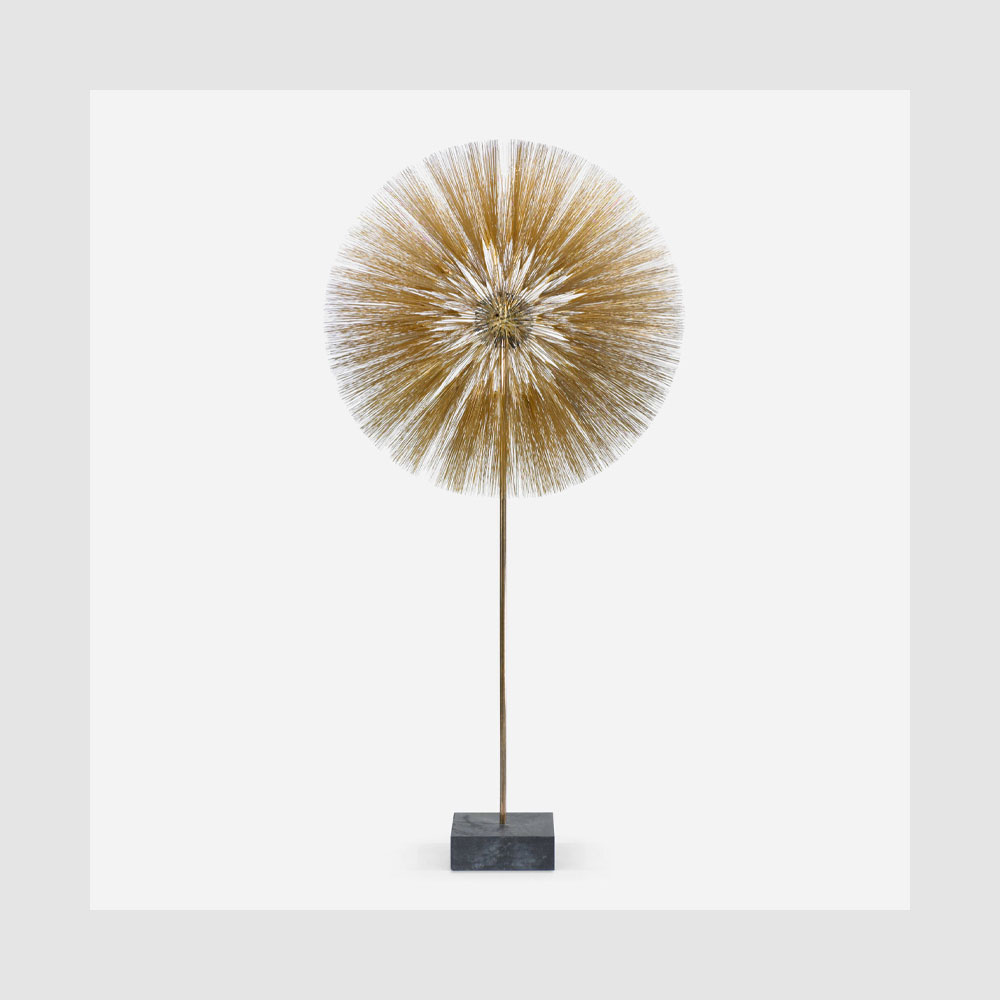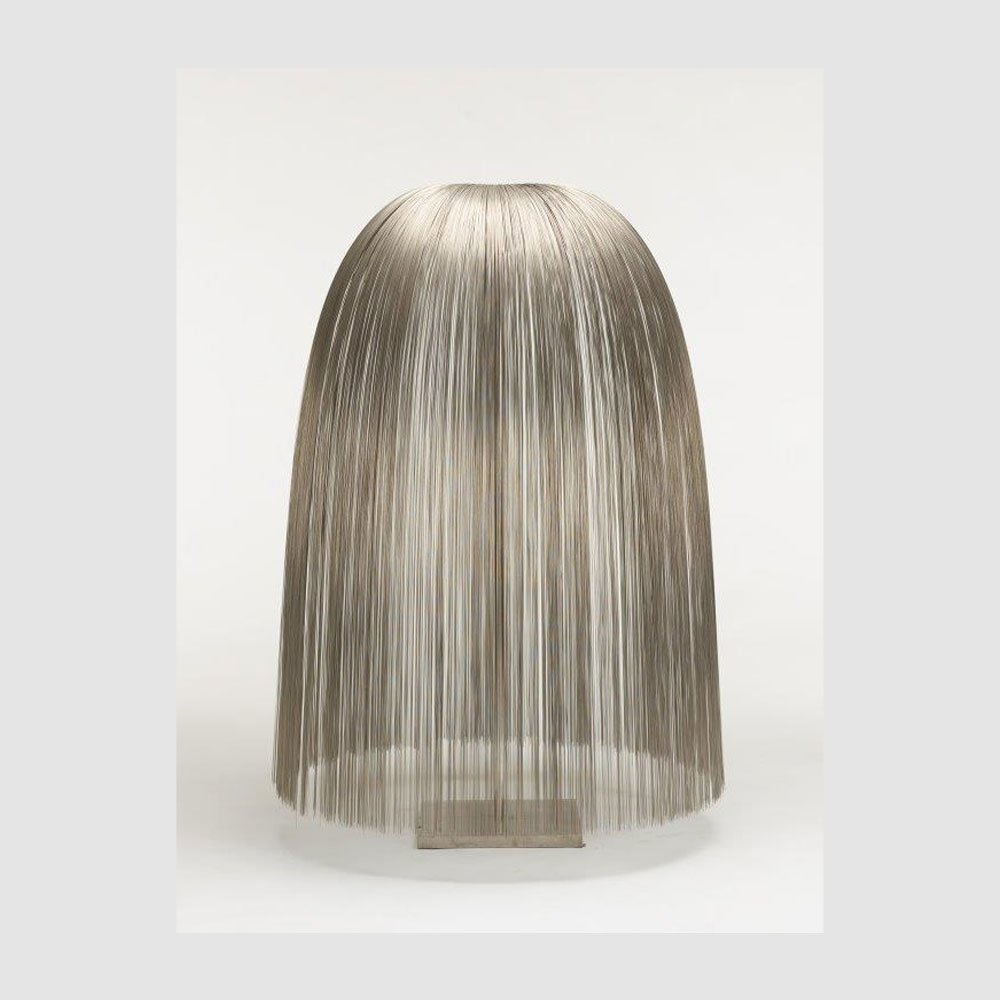Sculpture comprises many different three-dimensional forms; most all are made of or include some element of metal. Bertoia utilized a great variety of metals, metal alloys, and metalworking processes over the course of several decades of sculptural production. Sonambient sound sculptures are, of course, sculptures as well, but because of their unique sounding qualities and variety, they are in a category all their own. See Sonambient – sound sculptures above.
The artist learned to weld at Santa Monica City College in California in 1943, and immediately began to experiment with the technique. His first efforts, small sculptures made with wire, subsequently evolved into panels and screens. Key to these sculptural forms was the discovery that if enough space was left between the metal shapes, light would “dance” through the sculpture’s forms.
Over the course of his career Bertoia developed numerous metalworking techniques, including spill casting and the fusing together of wires or copper rods to build larger forms. He used many types of metals and alloys, often combining them in a single work. Bertoia also often added a coating of melted metal or a patina to the surface of his sculptures, amplifying their organic associations.
Included in the sculpture category are over fifty large-scale commissions. These works were all created for a specific location or architectural project, and many were made in collaboration with noted architects like Eero Saarinen and Minoru Yamasaki. These commissions offered Bertoia the chance to share his work with a larger audience and also provided a key source of financial stability.

